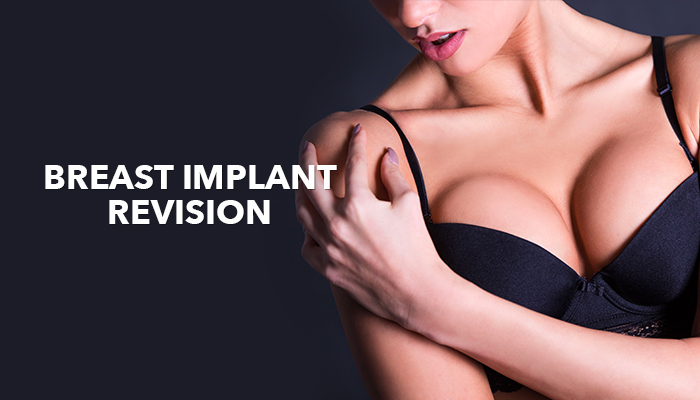
Arm lift, also called “Brachioplasty”, is a plastic surgery that eliminates the annoying, excessive, and sagging skin from the upper arm by removing deposits of fat. Once the excessive skin is removed, the plastic surgeon tightens the skin and smoothes the underlying supportive tissue to form a new and prettier contour in the arm. This change may not only make the patient appear slimmer overall, but he or she may also look younger.
The plastic surgeon helps choose the best treatment according to the cosmetic goals and the natural contours of the arms and the body, always maintaining a suitable ratio. This plastic surgery may be performed alone, but it is usually performed in conjunction with other procedures like body, neck, or facelift; likewise, it can be performed with breast augmentation or abdominoplasty. Statistics from the American Society of Plastic Surgery (ASPS) show an increase in this kind of surgery during recent years, possibly due to the increased rate of bypass surgery, which causes patients to lose a lot of weight quickly thus resulting in sagging skin.
This procedure is most common in women; however, men can obtain great benefits, too. Likewise, most patients are over fifty-five years old, which supports the theory that it helps to eliminate the sagging skin caused by aging.
Who is an ideal patient for an arm lift?
In some cases, a person may improve his/her upper-arm appearance with exercise, but in other cases the skin has lost its elasticity, which can’t be corrected by exercise. Those who feel self-conscious about their upper arms and desire to remove all of the excess fat and sagging skin may find an excellent option in an arm lift.
When a person has lost weight quickly (from undergoing bariatric surgery, after pregnancy, or with diet and exercise), he or she may have redundant underarm skin and can benefit from an arm lift, too. Likewise, this surgery may also help when a person wants to remove the signs of aging in the arms.
The patient who undergoes this procedure should be physically healthy, a non-smoker, and committed to a healthy diet and lifestyle to maintain a stable weight both before and after undergoing the procedure. It is also important that the patient has realistic expectations and understands the limits of the plastic surgery.
Generally, patients over sixy-five years may tolerate the procedure; however, in some cases, the plastic surgeon may apply extra tests before approving the procedure to avoid potential complications.
It is important to remember that the final opinion about a patient’s candidacy for an arm lift is decided by the plastic surgeon.
What are the advantages of an arm lift?
After an arm lift surgery, the patient will look better with form-fitting, short-sleeve or sleeveless clothes, and even naked. Likewise, he/she will recover self-esteem. Those patients who have lost a lot of weight prior to the surgery will look better, and all of their effort and dedication will be more noticeable. Overall quality of life may improve.
What are the disadvantages of an arm lift?
After an arm lift surgery, the patient may have visible scars from the armpit to the elbow in the inside of the arm (especially when the procedure is extensive). The way the final scars will look is unpredictable; this just depends on the healing capacity of each patient.
How much does an arm lift cost?
According to ASPS’s 2014 statistics, in average, an arm lift costs $3,936. This can vary widely according to the extent and difficulty of the procedure; full upper arm lift are usually more expensive than mini-arm lift.
In addition, the costs of anesthesia, operating room facilities, or other expenses like post-operative medication should be considered. This is a cosmetic procedure, so most insurances will not cover it nor potential complications of the surgery.
Good plastic surgeons commonly have expensive fees, but his or her experience and knowledge in the field is very important to obtain the desired results, and it is important for the patient to feel safe in the surgeon’s hands.
What is the pre-operative cares for an arm lift?
During the first consultation, the plastic surgeon can determine if the patient is a good candidate for this type of surgery; for this, it is important to know the patient’s desired outcomes, all of his/her medical conditions, allergies, and current medications (including herbals and vitamins).
During this consultation, the plastic surgeon will examine the patient’s skin, to determine its quality and the natural shape of the arm; this is important to avoid post-operative deformities. The plastic surgeon will take pictures of the arms of the patient to compare with pictures taken after the procedure. At this moment, the patient and the plastic surgeon should decide together both the type of anesthesia and the type of arm lift.
It is important for the patient to avoid smoking and drinking alcohol at least four weeks before the surgery. Likewise, some current medication should be modified to avoid bleeding. On the day of the surgery, the patient should wear comfortable and loose clothing.
The patient shouldn’t omit any detail of his/her health because this may increase the risks. Knowing all the details about the patient’s health, the plastic surgeon may need to take certain precautions to protect the patient’s health.
The patient may ask the plastic surgeon for before/after photos from previous patients, to see if the results are similar to the patient’s desired results. It is also important for the patient to clarify any doubt before undergoing the surgery; the results of this procedure may widely alter the appearance of the body, so it should be a personal and definite decision.
What is the general procedure of an arm lift?
The patient may be under local or general anesthesia; this depends on the patient’s conditions and the plastic surgeon’s considerations. This procedure usually takes between one to two hours. Some lines will be marked with a permanent marker in the arm to guide the surgeon during the procedure.
After that, the surgeon will proceed to make incisions (mainly in the inside or the back of the arm) in order to remove the excessive skin and fat (liposuction may be used to remove difficult deposits of fat). The incisions will depend on the technique being used; this is selected according to the amount and location of the excessive skin and fat. These may be:
– Full Upper Arm Lift (also called standard or extended brachioplasty): This technique includes an incision from the armpit to the elbow. This technique allows for the elimination of excessive skin from the entire upper arm. It is very beneficial after a rapid weight loss (bariatric surgery patients) or for inelastic skin caused by aging. The incision may be created like a curve or in a form of “z” to minimize the final scar.
– Mini-Arm Lift: In this case, the incision is smaller, made only in the armpit. This technique is beneficial when there is little excess of fat and skin in the upper arm (it is mainly around the armpit). The scar will be practically invisible, but it won’t allow an extensive revision of the arm.
After the plastic surgeon makes the incisions, the excess of skin and fat will be removed. When the incision is closed, the arm obtains a firmer and smoother contour. Two types of sutures are used: beneath the skin (it will be absorbed by the body and bring support to the internal structures) and some external stitches (to close the skin). The plastic surgeon will always be careful to hide the scars the best as possible (the patient should know that it is impossible to perform this procedure without leaving any scar).
How is the post-operative care for an arm lift?
This kind of surgery usually requires several weeks of recovery, so the patient should find someone to take care of him/her, including driving him/her home after the procedure. During the first days, the patient may experience some inflammation and soreness, so he/she may take painkillers and antibiotics. The discomfort and pain should decrease after the first forty-eight hours.
The patient and his/her caregiver should change the dressings, bandages, and drains placed after the surgery. The patient should also sleep with the arms elevated (it is recommended to use between two and three pillows to support the arms) to minimize the swelling during the first days.
The patient should avoid baths before the first post-operative consultation; during this time the patient must be cleaned with sponge baths. Compression garments are required during healing to minimize swelling, too; this should be removed only during the cleaning of the incisions.
In the first consultation after the brachioplasty, the plastic surgeon will remove the bandages and external stitches; this consult is scheduled between five and seven days after the procedure.
The plastic surgeon will explain how long it will take before the patient can return to his/her normal level of activity, exercise, and work. But it is good for the patient to walk as soon as possible (short distances) to promote healing and avoid blood clots; stretching and careful movements are permitted too. However, all those movements that include lifting the arms over the head (like combing) are prohibited during the first days. Driving is permitted after ten days.
The patient should take two or three weeks off from work. Cardiovascular exercise should be avoided (for approximately one month after the procedure or according to the surgeon order) and strenuous activities (like heavy lifting and running) for at least six weeks. After this time, it is possible for the patient to return to his/her normal level of activity.
However, the patient should remember that everyone’s body heals in a different way, so visiting the plastic surgeon at the scheduled appointments may help to heal appropriately. The second visit is usually planned in the fourth week. At this time, the plastic surgeon may allow the patient to start mild exercise.
What are the results of an arm lift?
The new contours of the arm will be smoother and tighter and these results are evident immediately after the procedure. However, the final results are evident when all the swelling and bruising have gone. During the first six weeks, the scars will be pink and firm (very visible) and they lose color between nine and twelve months after the procedure.
The results of an arm lift may last many years if the patient keeps a stable weight; new changes of weight may promote the return of a loose skin. Aging may cause skin to change and become flaccid again, which may alter the results of the surgery.
If the patient notes any change in his/her arms, then he/she should visit the plastic surgeon for a new evaluation. Most patients agree that the scars that are left by the surgery are nothing compared with its benefits.
Like any other plastic surgeries there are not guarantees with this procedure, some patients may require two or more procedures to achieve the desired outcomes.
What are the risks and complications of an arm lift surgery?
When this procedure is performed by a qualified plastic surgeon, he/she may identify the risks in advance and plan the procedure to avoid them and if the patient follows all the advice of the plastic surgeon, there is a lower risk of complications; however, the patient may present complications like: adverse reaction to anesthesia, hematoma or seroma, infection and bleeding, changes or permanent loss of sensation (from nerve damage), scarring, poor wound healing, swelling of the hands, blood clots, allergic reactions, damage to underlying structures, persistent pain, non-absorption of internal sutures, and asymmetry between the arms or unsatisfactory results (the patient may need additional procedures).
There are other less-invasive methods to improve the appearance of the arms; these methods are ideal for those patients who cannot undergo surgery. Nevertheless, the results from these procedures are less dramatic than those results provided by plastic surgery.
Dr. Amjadi MD, DDS, FACS
Certified by the American Board of Plastic Surgeons
915 Gessner Rd #870
Houston, TX 77024
713-465-6198













